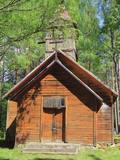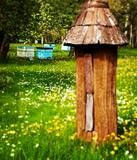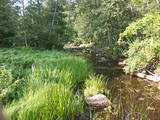| Нo | Название | Описание |
|---|---|---|
|
The route brings you to Kaunas, multiple Lithuanian regional parks and allows to enjoy the landscapes of the river Nemunas. Kaunas is Lithuania’s second largest city. It is notable for its modernist architecture. The city is located at the confluence of the two largest Lithuanian rivers: Nemunas and Neris. Moving further from Lampėdžiai to Vilkija, the Forest Trail runs for two days along trails and small countryside gravel roads next to the right bank of the river Nemunas. This section is shaped by beautiful landscapes with views of the river, the waterfront meadows and small villages. Do not miss the ferry in Vilkija crossing over the river Nemunas, one of the few still in operation in the Baltic States. For the next two days from Vilkija, the Forest Trail runs through its most spectacular sections in the Dubysa Regional Park from Kirkšnovė to Šiluva with mounds on riverbanks and historical churches now and there. This regional park covers the impressive Dubysa river valley, which reaches a depth of 40 m and a width of up to 500 m. Be prepared for a rolling terrain. Next, the route will take you to the town of Šiluva – the Catholic pilgrimage site – and to the Kurtuvėnai Regional Park. It is among the most forested areas of Central Lithuania; thus, the regional park with its glaciated valleys is a wonderland of forests, waters and wetlands. The Forest Trail leads along small forest paths, tourist trails, beautiful tree alleys and wetlands. The walk ends in Šaukėnai village, from where the city of Šiauliai is easily reached. |
||
|
Моленная Крупенишкской старообрядческой общины построена в
1908 году. Автор проекта храма инженер И. Иванов. В теперешнее время
храм в плохом техническом состоянии.
|
||
|
Šī vairāk ir uzskatāma par vēsturisku vietu, nekā tūrisma objektu, jo muižas pils atrodas avārijas stāvoklī un apskatāma no ārpuses! Mūsdienās redzamais muižas komplekss ir veidojies 19. - 20. gs. mijā, bet muižas pils (vēlīnais klasicisms) - 19. gs. pirmajā pusē. Vēlāk tai piebūvēja neobarokālus torņus abos ēkas galos. Vienā no tiem atradās kapela, otrā – bibliotēka. 19. gs. tika uzsākta ainavu parka un dendrārija izveide. 19. gs. beigās pilī norisinājās plaši remontdarbi, un tās īpašnieki – Kerbedzu dzimta ēku līdz pat 1. pasaules karam atvēlēja māksliniekiem. No 1920. - 1975. g. muižā darbojās pamatskola, tad ēkas kā noliktavu izmantoja kolhozs. |
||
|
Красивый сельский двор с экологической философией управления и ~ 300 пчелиных семей. Для посетителей построен магазинчик и дегустационный зал. Покупка меда разных цветов, цветочной пыльцы, прополиса, пчелиного хлеба, восковых свечей и сувениров. Дегустация продуктов пчеловодства (в т.ч. медового вина) и экскурсия. |
||
|
Ķurmrags is one of the most distinct capes along the Vidzeme shore of the
|
||
|
1855, als einen Schiffahrtsweg getieft wurde, wurde im Haff unerwartet eine Bernsteinablagerung gefundet. In der Zeit zwischen 1860 und 1890 wurde dort 2250 Tonen Bernstein gewonnen, einbezogen einzigartige Bernsteingegenstände aus der Jungsteinzeit und der Bronsezeit. |
||
|
Ein der ethnografischen Dörfer in Dzūkija mit Holzgebäuden und Kruzifix. |
||
|
Наблюдаемый сегодня комплекс усадьбы «Стукмани» создавался во время перестройки в XVII и XVIII столетии, когда вместо строений крепостного типа был возведен замок господской усадьбы и остальные хозяйственные постройки. Центральную часть ансамбля господской усадьбы – двор прямоугольной формы - окружает здание дворца и построенные друг напротив друга, украшенные колоннами амбар, конюшня и каретная. Последние две постройки вместе с колокольней и проездными воротами визуально создают более внушительную часть зданий. С 1780 года в господской усадьбе хозяйничал род Карла Отто фон Левенштерна. Усадьбу можно осмотреть только снаружи. В окрестностях господской усадьбы «Стукмани» находится природная тропа. + 371 26449567 (гид по Плявиньскому краю). |
||
|
Pirms dodamies tālāk – Skaistkalnes virzienā, var izmest nelielu loku līdz Lejeniekiem, kas atrodas skaistā vietā – Mēmeles kreisajā krastā, 6 km austrumos no Bauskas. Latviešu dzejnieka Viļa Plūdoņa (1874. – 1940.) memoriālais muzejs dibināts 1968. g. viņa dzimtajās mājās „Lejeniekos”. Zemgales daba un vecmātes stāsti būtiski ietekmēja nākamā dzejnieka daiļradi. Šeit nokļuvušie var apskatīt ratu un etnogrāfisko priekšmetu kolekciju, izstaigāt Plūdoņa taku vai apmeklēt dzejnieka un viņa radinieku atdusas vietu netālu esošajos kapos. Bērniem noteikti jāiegriežas “Zaķīšu pirtiņā”. |
||
|
An important complex of the coastline and its sand dunes along with the mouths of three major rivers – the Lielupe, the Daugava and the Gauja. This area has ancient traditions of recreation and spa services. The territory has lovely shoreline landscapes and features one of the few coastline meadows in Latvia. The nature park includes several restricted areas – the meadows of the Lielupe estuary, Vakarbuļļi, Daugavgrīva, Vecdaugava and Ummis (see the section on “Restricted Natural Areas”). Interesting elements of nature in this area include the amphitheatre of the Garciems dunes, along with individual dunes such as the Legzdiņi dune and the so-called ski mountain dune. Visitors will be attracted by various cultural and historical monuments – fortifications on the Mangaļi peninsula, military buildings from the period of the Russian tsars all the way through the late period of the Soviet occupation, the fortress of Daugavgrīva, the Vecāķi spa with its old shoreline buildings, and the beaches at Daugavgrīva and Vecāķi. The proximity of the city of Rīga and various important recreational resources are the reason for the massive anthropogenic burden that is placed on this territory. The nature park is appropriate for active tourism (hiking, bicycling, boating, driving), distance skiing, nature and bird-watching, cultural tourism, passive leisure and educational tourism. There are nature trails at Daugavgrīva and the Rožu dunes, along with other elements of infrastructure. |
||
|
The largest NATURA 2000 territory in Latvia covers 6% of the country’s area. It is located in parts of the Limbaži, Valmiera and Valka districts, and it is a place of an enormously diverse range of landscapes, biotopes and species. The Salaca River is one of the most important rivers in the entire Baltic Sea region in terms of spawning grounds for salmon. The river valley and its sandstone cliffs attract many visitors. It is no accident that this is the second most popular river in Vidzeme for water tourism. The shore of the Bay of Rīga, which is not very long, also features a great diversity in landscapes and biotopes. At the northern end, we find the Randu meadows. In the central part there are sandy beaches, but at the southern end – 22 kilometres of rocky shoreline. The so-called Northern swamps are found on the border with Estonia, while the Seda heath is one of the most important places in the region for birds to rest and feed during migration. The reserve also features a diverse forest in which one can find all of the types of forest which are common in Latvia. Nature trails and viewing towers or platforms are found in the Randu meadows, on the banks of Lake Burtnieks, along the Planči and Niedrāji-Pilka swamps, on the banks of Lake Dziļezers and Lake Lielezers, and elsewhere. The Skaņākalns park in Mazsalaca is one of the most popular tourist destinations in Northern Vidzeme. The territory boasts many important cultural monuments, including one of the earliest known settlements in Latvia – a fishing settlement and burial ground which date back to the 5th to the 2nd millennium BC.
|
||
|
Находится в живописном месте около Ругайского водохранилища. Хозяин выращивает и перерабатывает рыбу. Накрывает столы, на которых присутствуют латгальские блюда. Сотрудничает с крестьянами и рыбакам. Латышская кухня: Копченая рыба (карп, налим из Пейпуса, линь, сом, лещ). Консервы из леща. Из карпа, линя и леща варят рыбный суп. Крупяная каша с копченым мясом, приготовленный на месте ржаной хлеб и сыр. Особое блюдо: Суп-гуляш из линя. |
||
|
В пятом поколении (с начала 19 века) - в Латвии старейший продолжатель традиций рода бондарей, который выделывает бочки из дуба и ясеня. Рассказ, наблюдение за процессом скрепления, стягивания обручами, обжига бочек. Бочковые и деревянные бадейки, заказ и приобретение банных шаек. |
||
|
Кафе в центре старой части Кулдиги – на ратушной площади. Угощение на любой вкус – от легких салатов до сытных блюд. В помещениях кафе находится кофейня-обжарочная Curonia, где посетителям подадут свежемолотый вкусный кофе. |
||
|
В1699 в центре Нюкши Пасиенские доминиканские монахи построили часовню, на месте которой в 1765 году помещик Хилзен возвел новую церковь. Помещения были маленькие, и в 1922 - 1926 гг. на фундаменте старой церкви строится новая и большая – теперешняя церковь, которую называют одним из самых красивейших деревянных храмов Латгалии. В здании находится центральный алтарь работы второй четверти XVIII века и два боковых алтаря работы примерно 1700 г. Церковь можно осмотреть изнутри. |
||
|
Маршрут пролегает от столицы Риги Латвии, через красивые сельские территории до Каунаса, который является вторым по величине городом в Литве. Ландшафтный сад и парк Клугов славятся бегониями. В Добельском садоводческом институте имеется коллекциями из более чем 200 видов и сортов сирени. Сад красивых и практичных идей может похвастаться своей коллекцией хвойных деревьев, а гостям предлагают порошки из пряных трав, сушеные ягоды и фрукты. «Чай гномов» - одно из самых больших хозяйств по выращиванию лекарственных трав в Латвии (выращивают эхинацею, ноготки, ромашку и др.). В Кроньауце в период цветения вы можете насладиться красотой пионов в коллекционном саду Андра Беркина и великолепном тюльпановом саду Виестардов. Следующая остановка находится в фермерском хозяйстве «Дроши веселс», которое производит травяные мази и выращивает овощи. Посетив Домик перечной мяты, вы сможете насладиться мятным чаем, печеньем, медом с мятой и мятным сиропом. В усадьбе Бланкенфельде вы можете осмотреть уникальную коллекцию колоколов, насладиться натуральными соками, сиропами и маринованными огурцами, произведенными в усадьбе. В Йонишкисе посетите красно-белую Йонишкскую синагогу, Церковь вознесения Святой Девы Марии и Музей истории и культуры Йонишкиса. Усадьба Якишкяй не отремонтирована и сохранила оригинальные элементы, такие как, например, печи, ставни, лестницы, двери. В Балтийском музее выращивают около 30 различных видов и сортов растений. В Шяуляйском ботаническом саду созданы три сада старинных растений в соответствии с сельскими традициями соответствующего периода - довоенного, межвоенного и послевоенного. Бурбишское поместье со своим ландшафтным и скульптурным парком организует ежегодный фестиваль тюльпанов. В Клебонишкяйский музее сельских домов можно осмотреть аутентичные хозяйства Аугштайтского региона. Поместье Байсогалас называется королевским, поскольку когда-то оно принадлежало великому князю литовскому, и его парк площадью 12 гектаров является одним из самых красивых в Литве. В музее известного литовского поэта Мачюлиса-Майрониса есть два красивых культурно-исторических сада. Домашние "счастливые блюда" можно приобрести в хозяйстве Гарси Тила, где также можно отправиться на прогулку по их 100-летнему фруктовому саду и осмотреть сад с травами. Литовский институт садоводства занимается как научной, так и экспериментальной / производственной деятельностью. Здесь вы можете приобрести саженцы, а также сезонные фрукты и овощи. В хозяйстве Тадаса Иванаускаса у парка Обелинес вы можете увидеть коллекцию из 300 видов и сортов растений, включая самое старое дерево - гинкго двулопастный. В Каунасе вы можете увидеть самую старую яблоню в Литве – ей почти 360 лет, она 8 метров в длину, 285 см в диаметре на высоте около 1,3 метра. В Каунасском ботаническом саду университета Витаутаса Великого растут уникальные растения, обустроена самая большая оранжерея в Литве, старинные литовские клумбовые растения представлены по разным растительных группам в соответствии с ботанической классификацией. Маршрут заканчивается в Каунасе, который был столицей Литвы с 1920 по 1939 год. |
||
|
Liellopu izsoļu nams ir vienīgais liellopu izsoļu nams Baltijā. Izsoles tiek rīkotas gaļas šķirņu jaunlopiem - buļļiem un telēm vecumā līdz 12 mēnešiem, regulāri - divas reizes mēnesī. Katru mēnesi izsolēs piedalās vairāk kā 2000 Latvijā audzēti jaunlopi. |
||
|
A distinct area of the lower reaches of the Vitrupe River, with small sandstone cliffs and many rare species of plants and molluscs. Visitors can visit the Ķirbiži Forest Museum and its information and botany trail. It weaves along both banks of the river and allows people to look at the most typical examples of flora in the region. The noble Vāloži oak tree is a key element there.
|
||
|
Хозяйство, основной вид деятельности которого зерноводство, в 2006 году начало деятельность в сфере молочного животноводства, а в 2008 году – занялось производством творога и сыра. На данный момент в хозяйстве насчитывается более 200 голов дойных коров, из молока которых производят свежее молоко, йогурт, сыр и мороженое. |
||
|
Pokaiņu mežs atrodas 13 kilometru attālumā no Dobeles, braucot Īles virzienā. Tas, izvietojies uz stāviem pauguriem un dziļām ielejām, veido neparasti gleznainu ainavu. Mežā grupās, kaudzēs, akmens upēs un valnīšos, atrodas slavenie Pokaiņu akmeņu krāvumi. Krāvumi daudziem cilvēkiem liek sajust savdabīgus enerģijas strāvojumus - vieni redz vīzijas, bet citi – uztver informācijas plūsmu. Takas ved pa pagurainu apvidu.
|
||






















